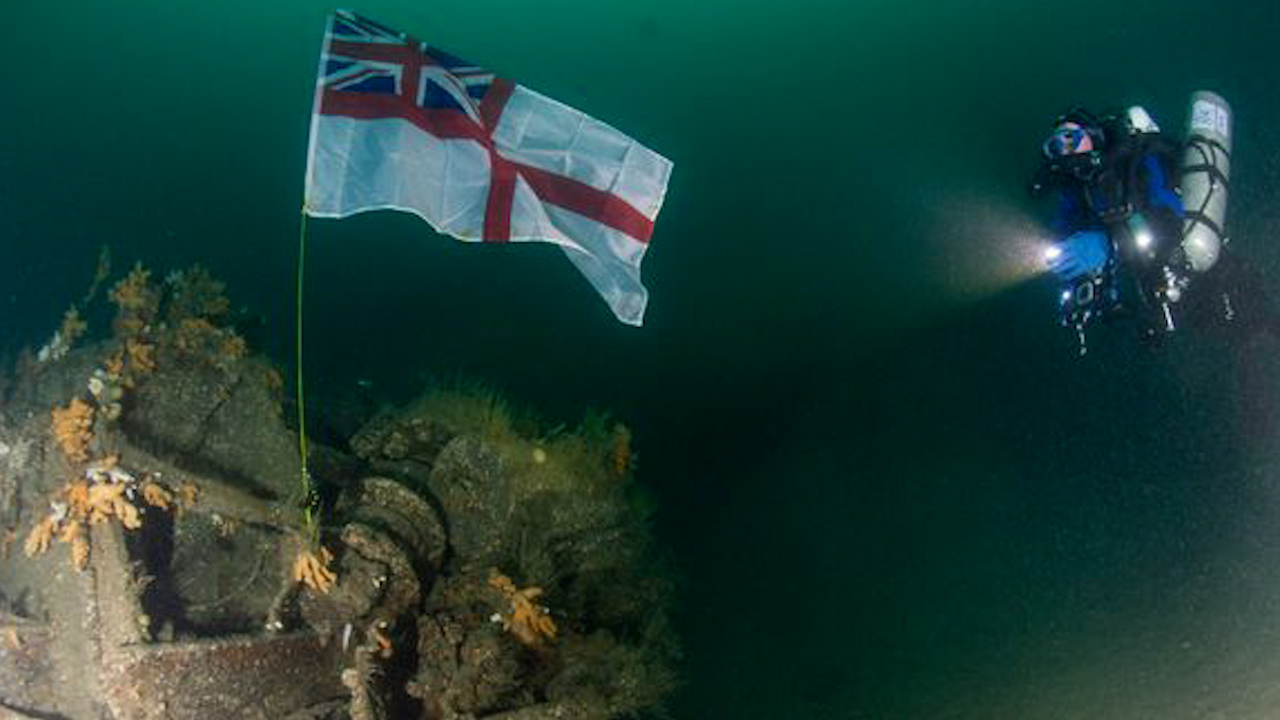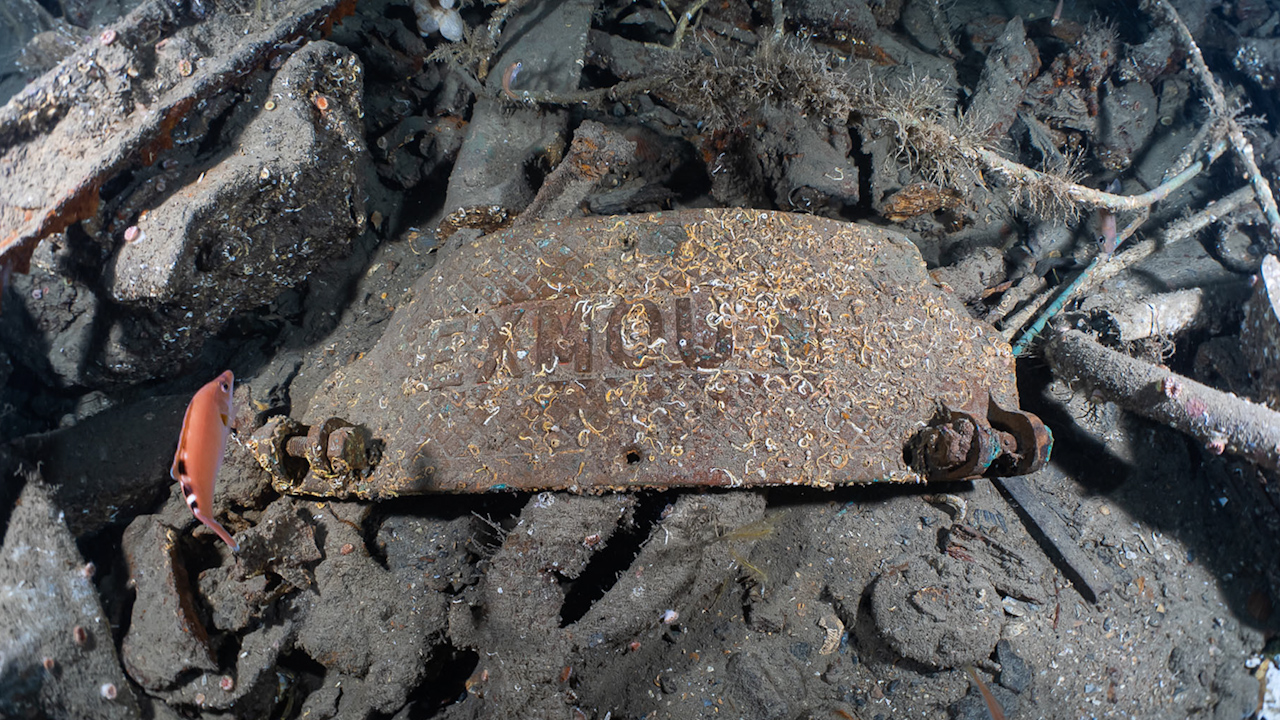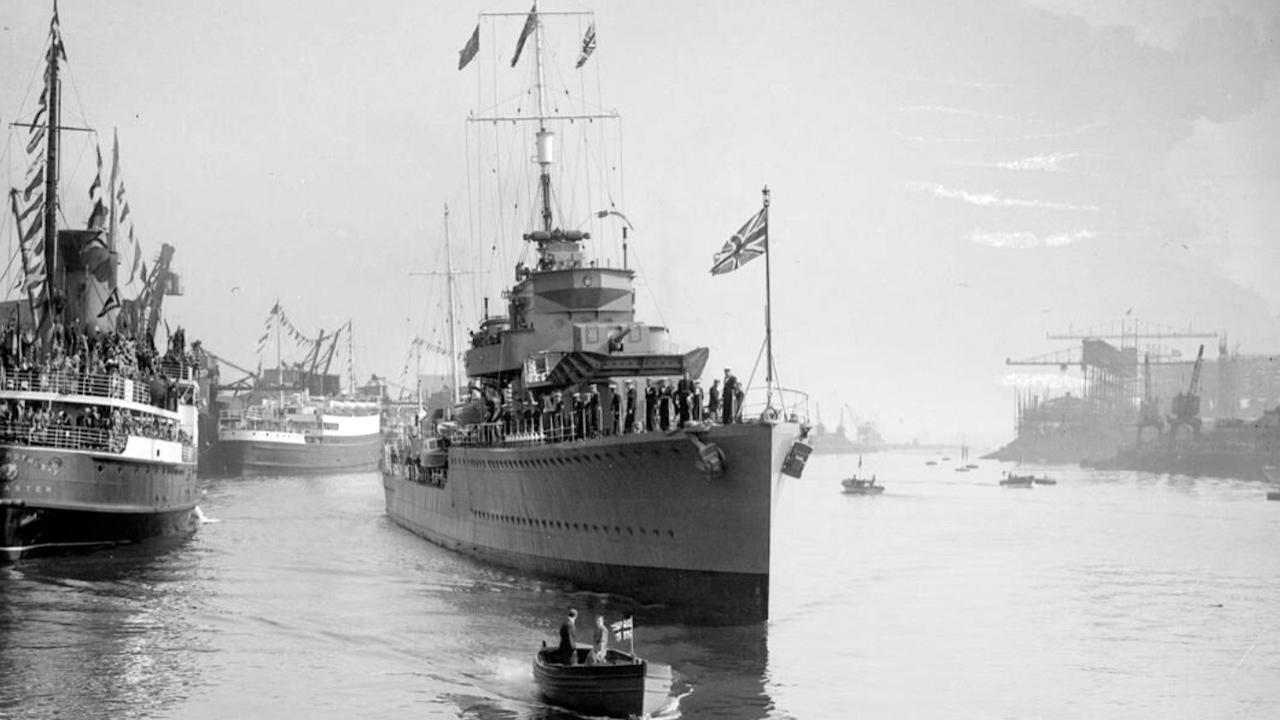
White Ensign hoisted over Royal Navy destroyer once more after being sunk in WW2

The wreckage of a Royal Navy warship that was sunk during the Second World War has been surveyed by a team of military and civilian divers – and the White Ensign is now "flying" over her again.
The wreck of HMS Exmouth, the first surface ship to have been lost with all hands during the war, was catalogued as part of a preservation project.
Divers descended more than 50 metres under the North Sea to conduct the survey of the remains of the warship – and honour the 190 crewmen who died.
Lieutenant Commander Jen Smith said: "One hundred and ninety souls were lost when HMS Exmouth went down, and only 18 bodies were recovered ashore – the majority of that crew were lost at sea.
"So their legacy is the wreck itself, that is their final resting place.
"We need to ensure that the wreck stays preserved and remembered so future generations can visit her or pay their respects to those who gave the greatest sacrifice."

During the dive, the team placed the White Ensign flag back onto Exmouth.
The Portsmouth-built warship served extensively in the Mediterranean in the mid-1930s and on operations connected with Italy's invasion of Abyssinia and the Spanish Civil War.
She was sunk off the coast of Scotland in January 1940 after being struck by a torpedo fired by a German U-boat while she was escorting the steamer Cyprian Prince.
Her wreck was discovered two decades ago 20 miles off Wick in Scotland, but this was the first time a comprehensive survey had been carried out.

The survey team attended a short memorial service by the graves of the small number of sailors whose remains are buried in the local cemetery, where Lt Cdr Smith laid a wreath.
The project also looks to ensure the names of HMS Exmouth's crew are honoured by having their names added to the new RNLI Shannon-class lifeboat in Exmouth, Devon.
A JustGiving page has been set up with the donations to the RNLI not only helping to save lives at sea, but also helping to preserve the memory of HMS Exmouth's crew.
For each multiple of £50 donated one of the crew's names will be added to the new Exmouth lifeboat.










